#paranthropus boisei
Explore tagged Tumblr posts
Text
youtube
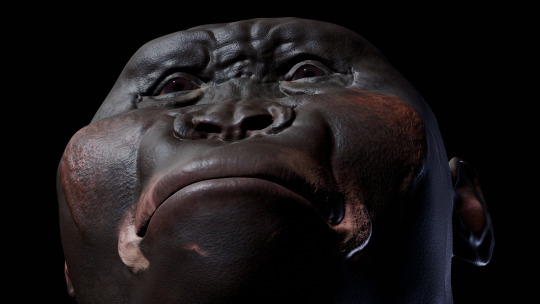

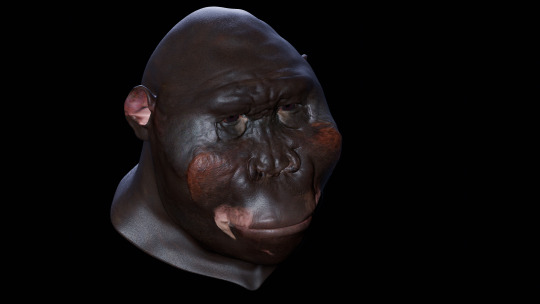
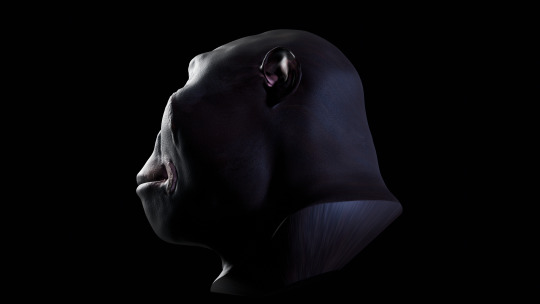




I've been working on 9 different Hominin reconstructions in Blender, and now I finally finished this Paranthropus boisei bust, reconstructed over a scan of fossil skull OH 5 provided by MorphoSource. The "skin" here is my significant modification of "free_basemesh_head_woman" created by Mono on SketchFab, because that had much better topology than I could make from scratch. These eight images are exported directly from Blender via a variety of camera setups, and the video fades between three additional versions of all these, including a Solid viewport shading option and a reveal of the underlying muscles, bone, and cartilage. Color and Displacement textures created in Photopea, 3d Object rendered in Blender, and video created with Clipchamp, 2024-25. More Hominins to come! Eventually!
#Blender#Digital Sculpture#3d Rendering#UV Texturing#Hominin#Human evolution#Paranthropus boisei#robust Australopiths#extinct primates#OH 5#Olduvai Hominin 5#MorphoSource#Blender Camera Export#video#Youtube#fossil reconstruction#craniofacial anatomy#paleoart#paleosculpture#bust#Pliocene#Tanzanian prehistory#Christopher Maida Artwork
27 notes
·
View notes
Text
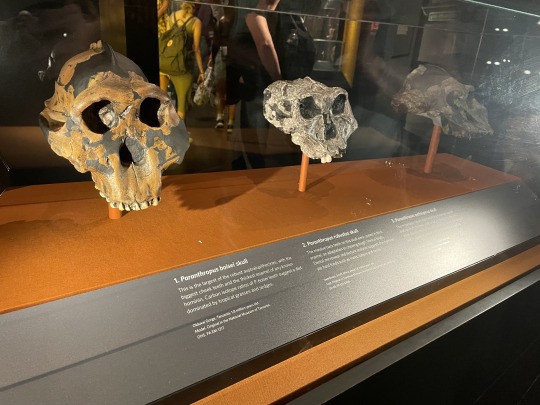
5 notes
·
View notes
Text

Paranthropus boisei
Paranthropus boisei is a species of australopithecine from the Early Pleistocene of East Africa about 2.5 to 1.15 million years ago.[1] The holotype specimen, OH 5, was discovered by palaeoanthropologist Mary Leakey in 1959 at Olduvai Gorge, Tanzania and described by her husband Louis a month later. It was originally placed into its own genus as "Zinjanthropus boisei", but is now relegated to Paranthropus along with other robust australopithecines.
Artwork: Elisabeth Daynes
1 note
·
View note
Text
1,5 milyon yıllık ayak izleri
1,5 milyon yıllık ayak izleri Kenya’da iki eski insan türünün birlikte yaşadığını ortaya koyuyor Dario Radley 29 Kasım 2024 Araştırmacılar, Kenya’daki Turkana Gölü’nün antik kıyılarında yaşamış erken dönem homininlerin yaşamlarına dair nadir bir bakış açısı ortaya koydular. Yaklaşık 1,5 milyon yıllık olduğu tahmin edilen fosilleşmiş ayak izleri, iki farklı hominin türü olan Homo erectus ve…
0 notes
Text
KNM-ER 406

During my time at the National Museum of Kenya, I was able to get up close and personal with some of the most incredible hominin fossils ever found!
It's super surreal to touch the fossilized bones of human ancestors who lived millions of years ago, and I feel very lucky to have had the experience.
KNM-ER 406 is one of those bad boys. It's a 1.7 million-year-old toothless cranium of Paranthropus boisei. It was found at Koobi Fora in East Rudolph, Kenya in 1969. It is beautiful and it is HEAVY.
0 notes
Text
just snapped out of a Cermaics Frenzy
#havent had access to a kiln in 4 years and finally started a ceramics class today#made a bowl#and a little guy sitting in a bathtub that's also an incense holder#then i brought some clay home with me and spent several more hours working on forming#my favorite fossil paranthropus boisei cranium (oh-5)#he needs more work but its already 1am and i got up Early today#anyway. had a really fun time#there's also open studio time on mondays and im not scheduled to work the next 3 mondays#so i get double the time for 3 weeks at least#which is sickkkk#im almost certainly going to need to buy more clay#unless ifocus on a couple bigger projects.... idk....#tree talks
1 note
·
View note
Text
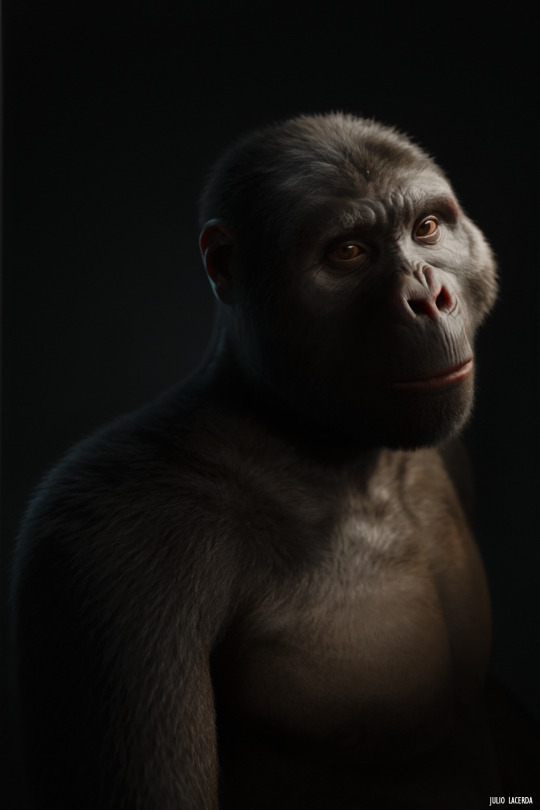
Extended Family VIII Zuberi Paranthropus boisei
Zuberi combines physical might with a gentle spirit, his robust frame concealing a guardian's heart. He excels in foraging and identifying plants, and though he is not much of a talker, Zuberi shares his wisdom through gestures and actions. Likes: the crunching sounds of chewing, misty mornings Dislikes: confrontation, being alone
—-
This is one in a series of portraits featuring different hominids under an intimate and humanizing light. Take these reconstructions with a grain of salt, but ask yourself: how similar to ourselves could our cousins have been?
Patreon • Ko-fi • Facebook • Twitter • Prints & Merch
987 notes
·
View notes
Text
Let's take a closer look at the hominin skulls in the Senckenberg Museum's human evolution room. Keep in mind this is not a linear progression through our ancestors, and more like a bunch of closer and more distant cousins.
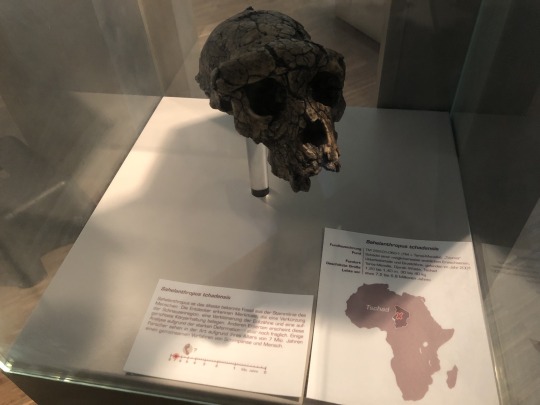
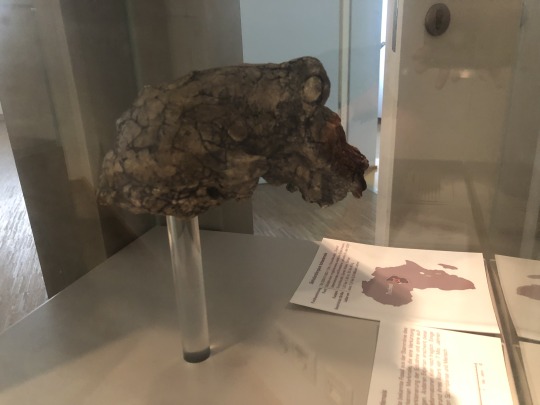
The first one, Sahelanthropus tchadensis is seven million years old, and may very well not be a hominin at all. I've always leaned towards the hypothesis that it's a gorilla relative, not one of ours. No matter which branch of the apes it belongs to, it lived not long after the time the human-line (hominins) and the chimp-line separated, and possibly even before that point!


Ardipithecus ramidus, the first hominin from where we can start making a fairly decent family tree of our relatives. Before this point, 5 million years ago, hominin fossils are very rare, fragmentary, and difficult to assign. One of the most interesting things that does seem to emerge from these early fossils is that we have walked on two legs for a long time. Maybe even so long that our common ancestor with the chimps and bonobos did it!

Lucy represents Australopithecus afarensis, who shows up at this point (3.3 million years ago).


Australopithecus africanus, the Taung child to be precise. We're about 2.8 million years ago at this point. Australopithecines must've been such fascinating creatures.
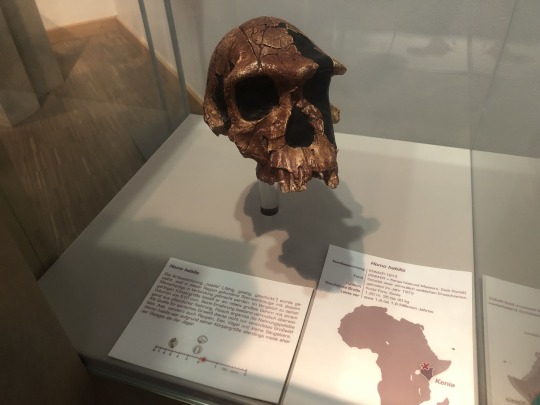

Homo habilis, the 'handy man', named that way because when they were discovered they were thought to be the first humans who used tools. Since then, Australopithecus tools have been found, and tool use by many different animals has also been documented.
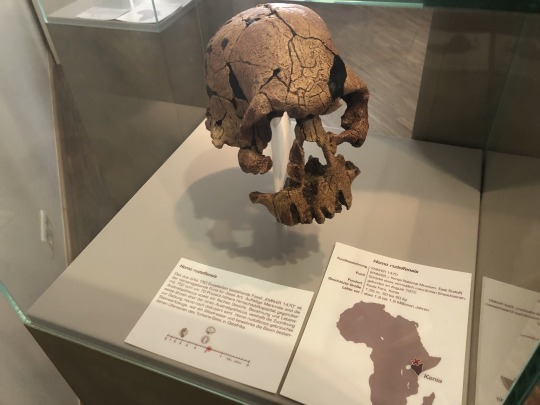
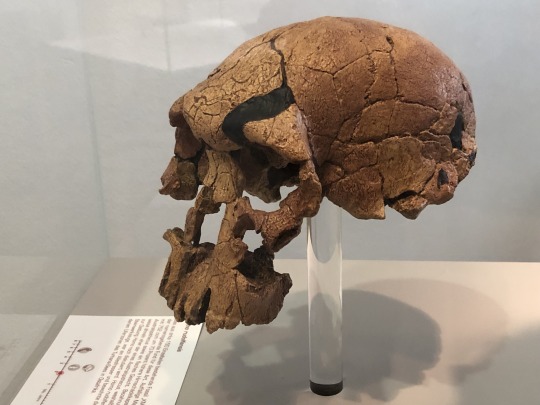
Homo rudolfensis, a population of humans who lived at the same time as Homo habilis and were notably bigger and a little brainier. Does it warrant being its own species? That depends who you ask. Splitting vs lumping is a point of contention in almost every group's biology, and it can run especially high in the field of human evolution since hominins are A very high profile and important fossils that directly relate to our own origins, and B an extremely tangled group that seems to have produced loads and loads of isolated populations and subspecies that regularly migrated all over the place and had frequent interbreeding events. Personally I tend to come down on the side of lumping them into a few major species.

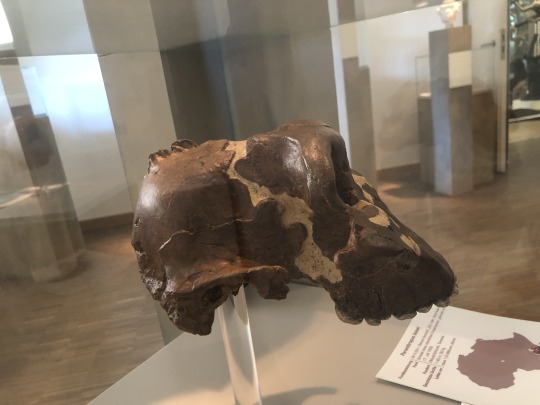
Paranthropus boisei. These were basically a separate lineage of australopithecines, quite different from our own ancestors, who continued to do australopithecus things until quite recently. They were very good climbers and seem to have returned to the trees.

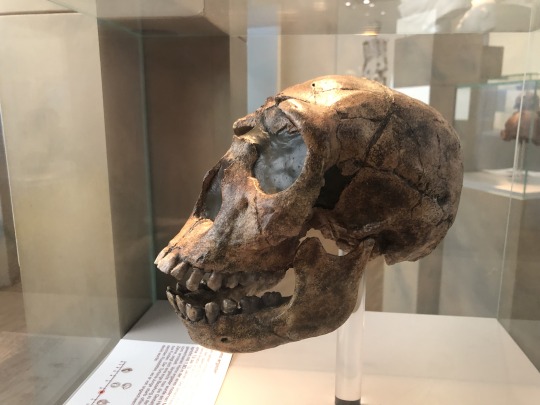
Homo ergaster, either a close relative or a synonym of the more famous Homo erectus. This is the point where we got really brainy, probably figured out how to make fire ourselves, and spread from Africa to Eurasia.

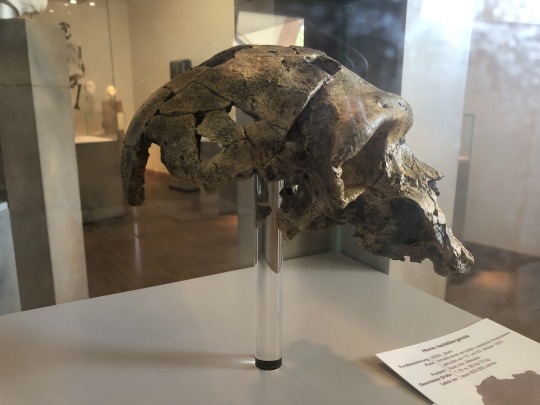
Homo heidelbergensis. Homo erectus and its many subspecies spread all over Africa and Eurasia and existed for well over a million years. As time marches on and evolution did its thing, we eventually start calling the ones in Africa Homo heidelbergensis. They were quite tall, positively enormous compared to little Lucy a few million years back, and they too joined in the human migrations out of Africa. From the H. heidelbergensis who moved into Eurasia we eventually get neanderthals and denisovans, while Homo sapiens evolved from the heidelbergensis populations in Africa.
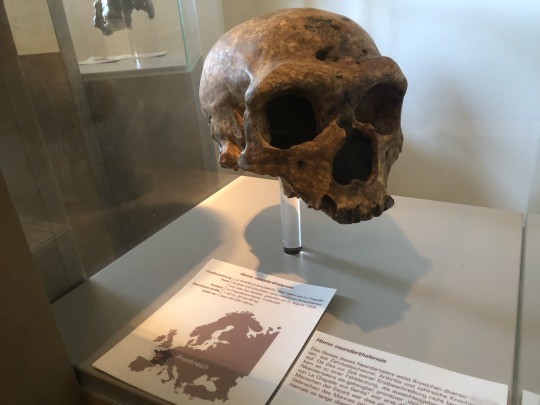

And there's the neanderthals! Large-brained and creative (the first known cave paintings belong to them and they buried their dead), they were likely quite different from the brutish image we often get from them. Rather than truly dying out, their populations eventually merged with the larger Homo sapiens population once they migrated out of Africa, leaving our modern genes with a couple percent neanderthal DNA.
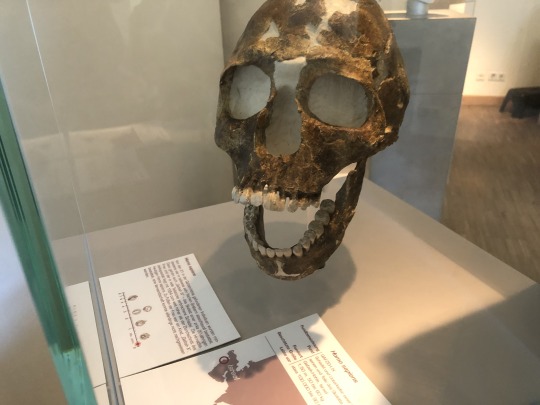
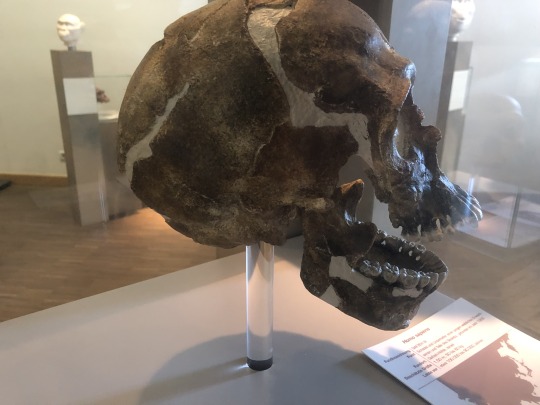
Homo sapiens. And that's us! Not so much the last remaining branch of the human family tree as much as several of the separate branches ended up coming back together and weaving into a single bigger branch.
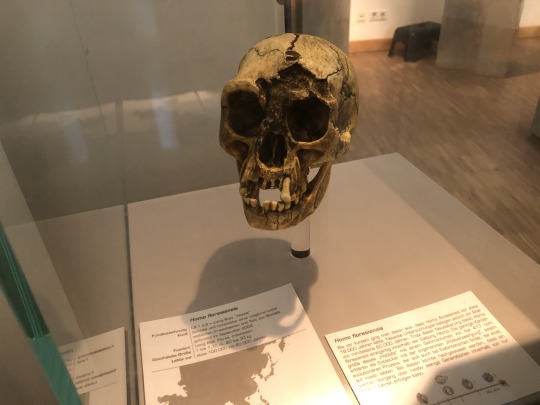
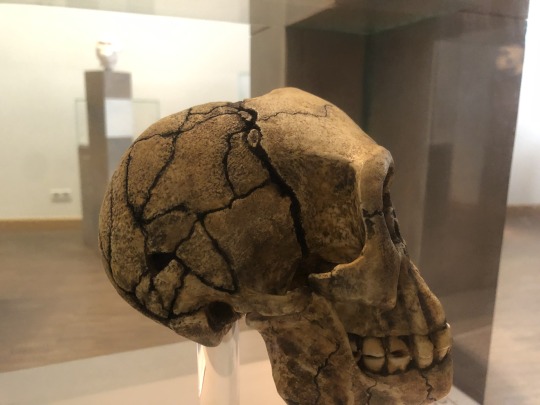
And then there's these little guys, Homo floresiensis! Probably originating from a Homo erectus population that ended up on the island Flores, insular dwarfism ended up making them grow quite tiny. On their isolated island, they remained until about 50000 years ago.
#human evolution#sahelanthropus#ardipithecus#australopithecus#homo#ape#primate#mammal#neogene#quaternary#palaeoblr#senckenberg museum#vicky's vritings
361 notes
·
View notes
Text
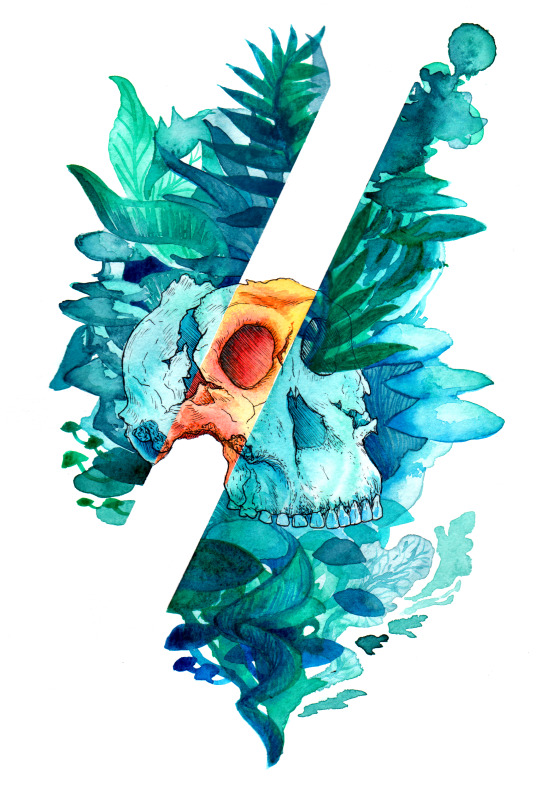
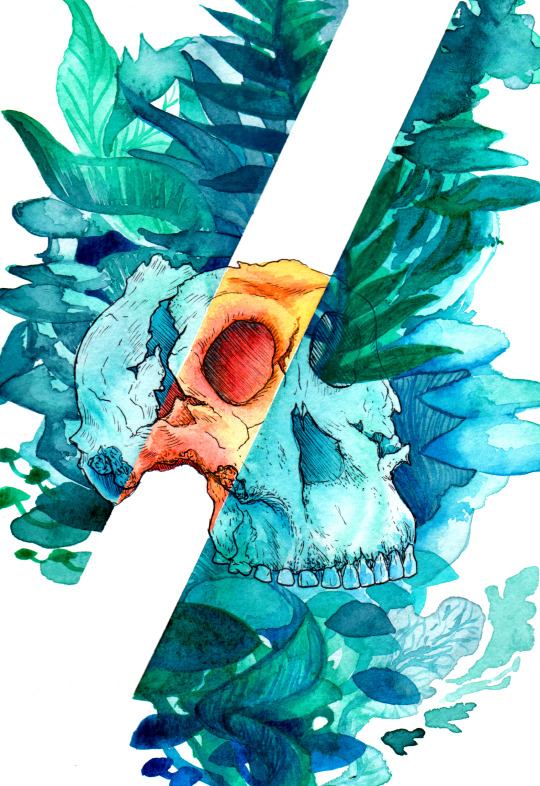
Ancestor (Paranthropus boisei)
Paranthropus boisei was an early hominid species from 2.5–1.15 million years ago, living among the wetlands and lakes of the East African Rift System. The skull "Zinj" or "the Nutcracker Man" was discovered in 1959 in the now-arid Olduvai Gorge.
#art#watercolor#hominids#sketchpad#early hominids#paleoanthropology#olduvai gorge#east africa#tanzania
212 notes
·
View notes
Text

Paranthropus boisei by Peter V. Bianchi
#prehistory#stone age#paleoart#anthropology#paleolithic#paranthropus#australopithecus#peter v. bianchi
5 notes
·
View notes
Text




Some hominids-in-progress I've had on lately: a Neanderthal shifting her weight in preparation to throw a spear, some improvements I made to the meshes and textures for my A. sediba and P. boisei skins, and skins I still have to texture for H. naledi and H. heidelbergensis Digital painting (Photopea, first image), Digital sculpture (Blender, last three images), 2024
#works in progress#Hominids#Human evolution#Homo neanderthalensis#Paranthropus boisei#Australopithecus sediba#Homo naledi#Homo heidelbergensis#digital painting#Photopea#digital sculpture#Blender#2d rendering#3d rendering#facial anatomy#comparative anatomy#life restoration of fossil skulls#hominid reconstructions#postcranial reconstruction#craniofacial reconstruction#Christopher Maida Artwork
59 notes
·
View notes
Text
why are all recreations of paranthropus so fucking funny?



robustus / aethiopicus / boisei
3 notes
·
View notes
Text

HAPPY BIRTHDAY OH5 BEST PARANTHROPUS!!!!



FUCK everyone happy birthday Paranthropus boisei
8 notes
·
View notes
Text
1.5-million-year-old footprints of 2 different species of human ancestors found at same spot

Researchers have discovered 1.5 million-year-old footprints of two different species of human ancestors at the same spot in Kenya. The prints are believed to belong to the species Homo erectus and Paranthropus boisei. According to an analysis of the footprints led by biologist Kevin Hatala of Chatham University, the footprints at the site were made within hours of each other.
#space#nasa#universe#art#astronomy#science#galaxy#moon#stars#cosmos#spacex#scifi#astrophotography#photography#earth#astronaut#love#alien#nature#mars#spaceart#sky#spaceexploration#planets#aliens#spaceship#spacetravel#rocket#digitalart#design
6 notes
·
View notes
Text
lenaluthoring -> boisei
clap for paranthropus boisei. everyone clap
#finally bit the bullet and changed my url after years#still haven't found a new pic yet so we shall stick with lena#//
2 notes
·
View notes
Text
Two Pre-Human Species Might Have Lived Together 1.5 Million Years Ago
A discovery in Kenya has revealed that Homo erectus and Paranthropus boisei, two distinct hominin species, coexisted 1.5 million years ago, according to reports. According to a study published in the journal Science on Thursday, the footprints were uncovered at Koobi Fora near Lake Turkana in 2021. These findings suggest that these two species not only shared the same environment but may also…
0 notes